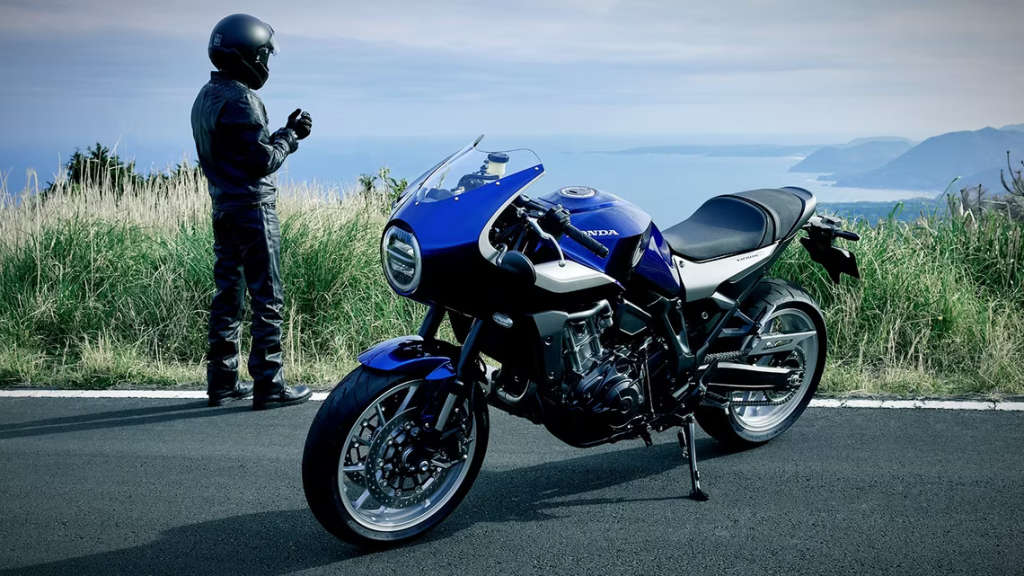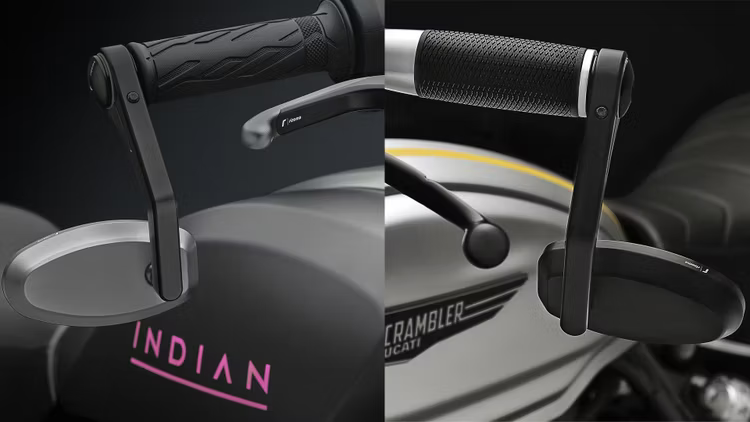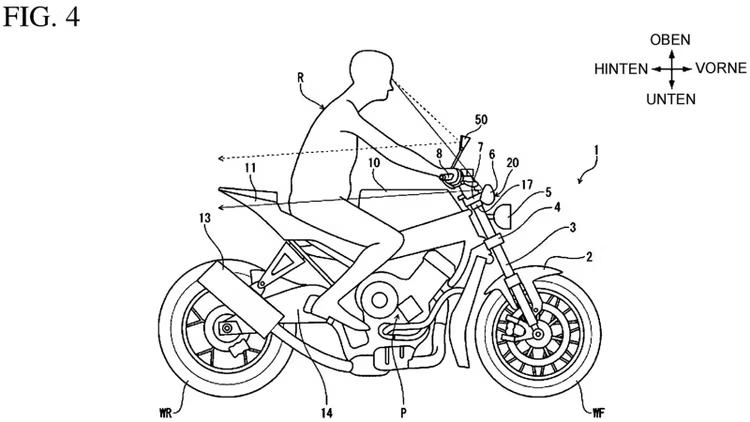Honda Low Mount Mirrors: Patents Reveal How Rear Vision Can Be Improved
Be in the know with Australian Motorcyclist Magazine, the leading Australian publication on industry
news, trends, stories and everything motorcycles.
Australian Motorcyclist Magazine, the best resource for riders in Australia.
Better rear-view vision from low-mount mirrors. Can this work?

Summary
- Honda has revealed patents for low-mount mirrors that attach below a motorcycle’s triple-tree upper clamp, providing a better view of what’s coming up from behind.
- While camera systems replacing mirrors seem like a good idea, electrical issues and adaptation to different light levels are current obstacles.
A rearview mirror is usually a flat mirror utilized in automobiles and other vehicles that is designed to allow the driver to see what’s behind the vehicle through the rear windshield. It’s usually affixed in the center of the car’s windshield via a ball-and-swivel-joint that can be rotated to different angles until the correct position is attained that shows the entire car’s rear windshield. The earliest known rearview mirror has been in use since the early 1900s in the form of an ordinary mirror and there is mention of its use by British Racing Driver and journalist Dorothy Levitt in her 1909 book The Woman and the Car.
On motorcycles, they may or may not have rearview mirrors. It is mandatory for road-going motorcycles to have rearview mirrors, though they do not have the conventional ones that cars have. On motorcycles, rearview mirrors come in different shapes, sizes, and designs that are most commonly mounted to the handlebars or on the front or upper fairing of a faired sportbike via a provided mount that is molded into the fairing itself and is most commonly held with two bolts.
Recently,Honda has revealed patents for low-mount mirrors which will attach below a motorcycle’s triple-tree upper clamp via a simple clamping system and bolt. Now why Honda would go and do that is anybody’s guess, but Honda’s information reveals it will provide a better view of what’s coming up from behind as compared to conventional, high-mounted mirrors since they show more of your shoulders unless the mirrors are extended.
Related:
Honda Hawk 11 Officially Revealed
Is It Revolutionary?

Well, it’s already on the available-only-in-Japan Honda Hawk 11 but the Harley-Davidson 48 has had mirrors positioned under the handlebar for ages, though they bolt in under the handlebars near the brake and clutch perch rather than clamp onto the front forks. Ducati manufactures mirrors for bar-ends in both upright and lowered positions – remember the Ducati 1000 from Tron Legacy? Rizoma also manufactures a reverse retro bar-end mirror. It has been done, and the internet is full of aftermarket mirrors. Revolutionary, no. But the idea may just catch on with the OEMS.
Mirrors vs Cameras

camera systems replacing mirrors with LCD display screens fitted into the shell where the mirror resides seemed like a better idea, but the possibility of electrical issues and the cameras having to adapt themselves to varying levels of light in different conditions negates this idea for the moment. However, some owners have already equipped their motorcycles with after-market systems, though positioned and clamped somewhere on the handlebar or in the cockpit. At some point in time, this will become a reality, but a mirror’s simplicity and function are undeniable. With cameras, there’s also the problem of theft or breakage, so it’s easier and more economical to replace a mirror than it is to replace a display screen.

Honda’s Layout Does Reveal Three Key Benefits:
- Honda’s mirrors are positioned further forward, so you can look over your hands to see them and the benefit is an unobstructed view since the view that the mirror reflects is below the level of your arms and elbows – no more shoulders in the picture.
- The mirrors don’t need to be positioned widely outward to see around your arms and shoulders but can be mounted closer to the centerline which means any forces acting on the steering via the mirrors are kept to a minimum.
- Since the mirrors are mounted closer to the steering line, the weight of the mirrors is not felt which improves balance and increases steering response.
It’s an idea, and with the Hawk 11 having already benefited from them, the low-mounted mirrors are destined to find themselves on other Honda models and the CB1000R could be one of those candidates. Detailed patent information came out last year showing what could be the 2024 CB1000R in a different element. The patent documents illustrate an inline-four naked that takes cues from the CBR1000RR’s engine of old but with CB1000R styling thrown in and a chassis that deviates from the current CB1000R. Don’t expect to see them on faired sportbikes anytime soon because the mirrors would never fit onto the fork under the upper clamp due to interference from the inner cockpit covers and upper fairing.
Related:
Radar Assist for Motorcycles? How About Cameras?
Are Low-Mounted Mirrors A Good Idea?

Keeping your eye level straight ahead while using peripheral vision and conventional mirrors is the norm, especially on a motorcycle that can attain high speeds. In a clutch situation, or a sudden braking event, you don’t want to be caught with your eye level straying down, only to look up and be caught out – it’s too late then. Your subconscious memory will have you looking for mirrors that are placed conventionally, so if the under-the-clamp-fork-mounted mirrors do make an appearance on the CB1000R, the jury’s still out on this one.
Continue exploring the article at this link : https://www.topspeed.com/honda-low-mount-mirrors-patents-reveal-how-rear-vision-can-be-improved/






